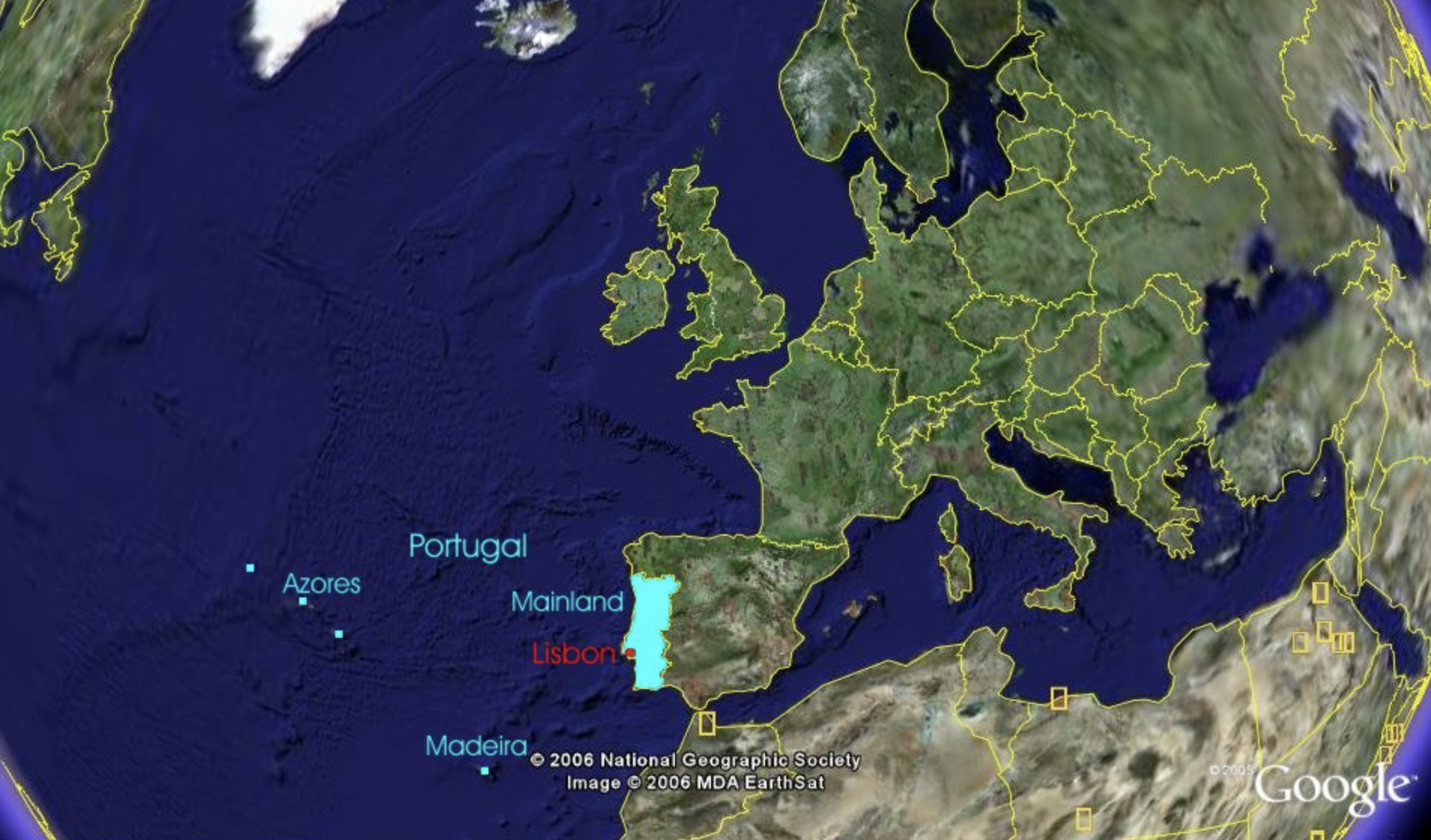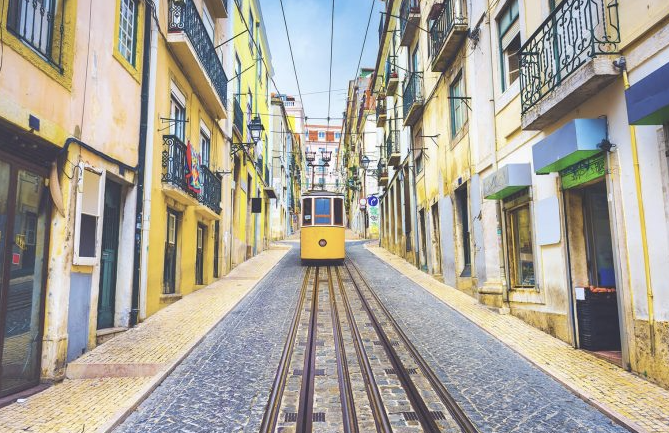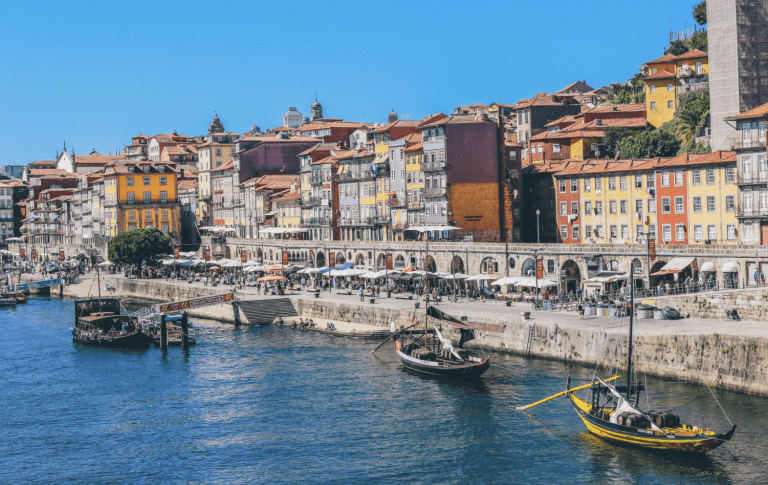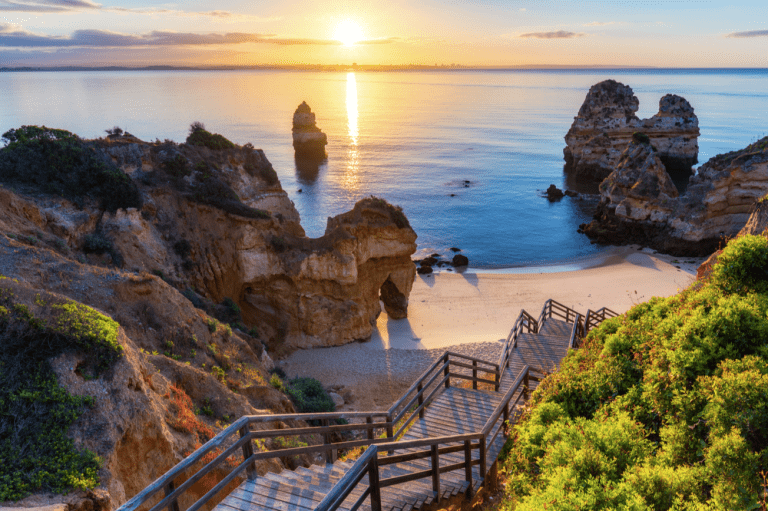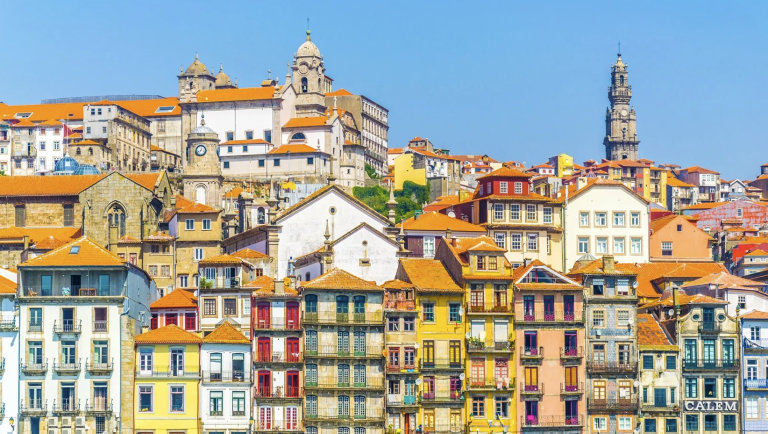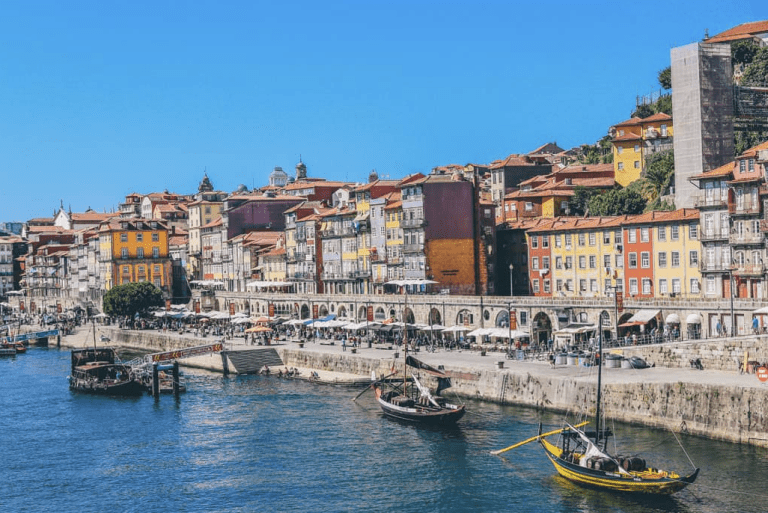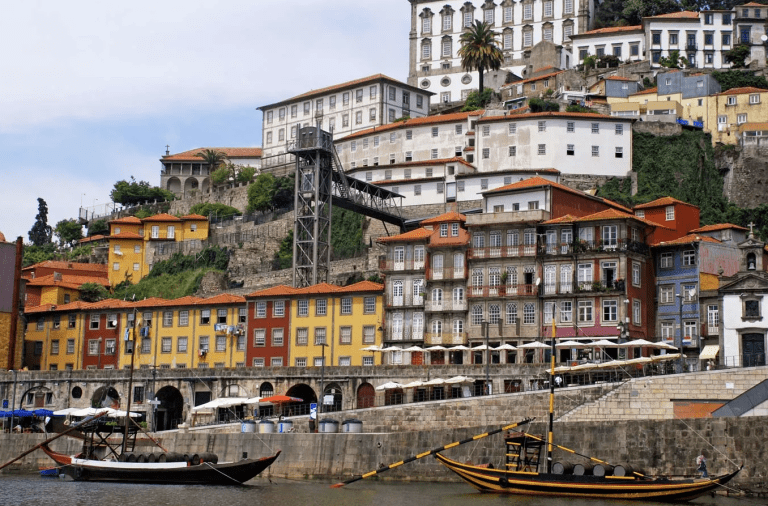Where is Portugal located, you may ask? This vibrant nation, officially known as the Portuguese Republic, is nestled in Southwestern Europe on the Iberian Peninsula. Sharing its mainland borders with Spain and fringed by the Atlantic Ocean to the west and south, Portugal’s geographical location has significantly influenced its history and culture.
But there’s more to this country than just Mainland Portugal. The Madeira Islands and Azores are autonomous regions of Portugal that boast a rich diversity of landscapes from volcanic mountains to lush greenery. These islands are not only geographically fascinating but also hold historical significance due to their role in early maritime exploration.
The story doesn’t end here though; beyond understanding where Portugal is located, we’ll dive into battles that shaped Portuguese history, transformation from an empire to a democratic republic within the European Union (EU), cultural influences & traditions like Fado music played on traditional Portuguese guitar, connectivity options for travelers across cities beyond Lisbon – including northern Portugal – which enjoys Mediterranean climate all year round.
Portugal’s Geographical Location and Landscape
Located at the far southwestern corner of Europe, Portugal is situated on the Iberian Peninsula with Spain to its east. This strategic location has gifted Portugal with a diverse landscape that is both captivating and inspiring.
The rich diversity of Portuguese landscapes
In the north, you’ll find rocky coastlines dotted with quaint fishing villages where life moves at a slower pace. As you move southwards, these give way to warm fertile lands known for their vineyards producing some of the world’s finest wines. But it isn’t just about coastlines and vineyards; Portugal also boasts mountain ranges such as Serra da Estrela – perfect for hiking enthusiasts.
Then there are national parks like Peneda-Geres offering an untouched wilderness experience or Ria Formosa lagoon system teeming with birdlife making it a paradise for nature lovers. And let’s not forget about Azores archipelago – nine volcanic islands each unique in its own right but Sao Miguel stands out among them all.
The unique charm of Sao Miguel
Sao Miguel, fondly referred to as the “green island,” is renowned for its lush pastures and forest-covered peaks. It’s home to one of the most beautiful crater lakes globally – Lagoa das Sete Cidades (Lake of Seven Cities). The lake offers breathtaking views that will leave any traveler awestruck by its beauty.
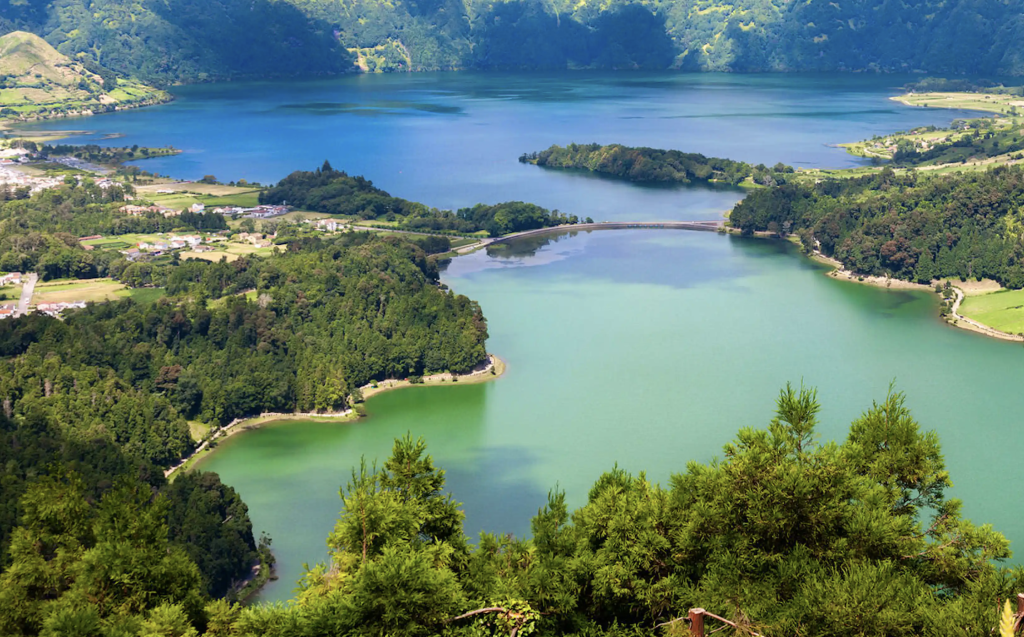
Beyond natural wonders, this island also hosts charming towns filled with traditional white houses contrasted against cobblestone streets creating picturesque scenes straight from postcards. Whether you’re exploring Ponta Delgada city center or visiting tea plantations at Gorreana – the oldest in Europe still operational today – there’s something everyone can enjoy here.
No matter which part your journey takes through Portugal’s diverse landscape, whether along the rugged northern coastline, down towards the sun-soaked southern regions, or amidst the verdant greenery of Sao Miguel, every corner of the country offers something special waiting to be discovered and enjoyed. So pack your bags, embark on the adventure of a lifetime, and explore all the hidden gems tucked away in the corners of this fascinating European nation.
Portugal is located on the Iberian Peninsula, sharing its eastern border with Spain. It offers a diverse landscape, from rocky coastlines and vineyards in the north to mountain ranges and national parks teeming with wildlife. The island of Sao Miguel stands out for its lush greenery, beautiful crater lake, charming towns, and tea plantations. No matter where you go in Portugal, there are hidden gems waiting to be discovered and enjoyed.
Historical Significance of Portugal
Portugal’s history is a wild ride of conquest, resilience, and transformation. It’s like a rollercoaster, but with more castles and spices.
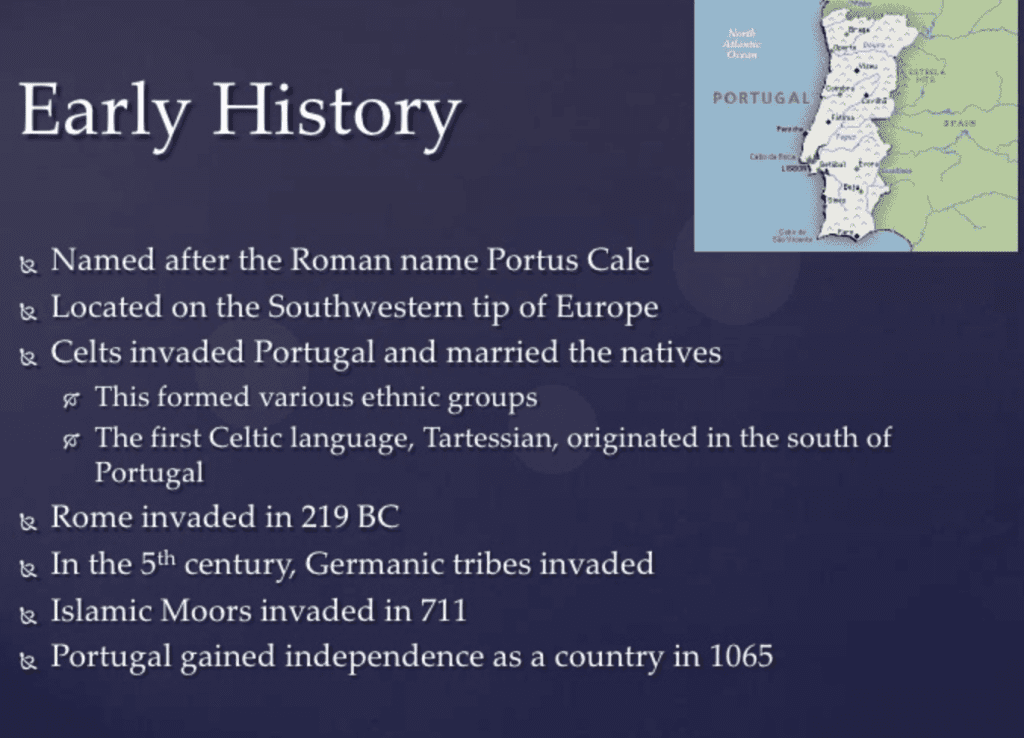
Battles that Shaped Portuguese History
The Romans invaded in 138 BC, but the Christians fought to reclaim it through the Reconquista. It was a medieval struggle, with blades and armour clashing.
During the Reconquista, Portugal won some epic battles, like the Battle of Ourique and the Siege of Lisbon. These victories turned Portugal into its own kingdom, and they’re still bragging about it with monuments and stuff.
Transformation from an Empire to a Democratic Republic
Portugal was once a big-shot empire, ruling over lands in Africa, Asia, and South America. They were all about spices, precious stones, and textiles. But then the winds of change blew, and decolonization happened. It was like a giant game of “Sorry, you’re no longer our colony.”
In 1974, Portugal had a peaceful revolution called the Carnation Revolution. They kicked out the authoritarian regime and became a democratic republic. It was like a breath of fresh air, but with flowers.
Everywhere you go in Portugal, from the bustling streets of Porto to the picturesque vineyards of Douro Valley, its history is alive and waiting for you to explore. Soak it all in and let the stories behind every stone and sip enrich your journey.
Political Relations and EU Membership
Under Prime Minister Antonio Costa and President Marcelo Rebelo de Sousa, Portugal has managed to maintain friendly ties with many nations on the world stage. The Prime Minister’s Office is an essential factor in sustaining these connections.
Global political relations maintained by current leadership
The country shares particularly good ties with nations like the United States, UK, and China. For instance, Portugal’s relationship with America dates back to 1791 when they established diplomatic relations making it one of the oldest alliances between two nations. This is further strengthened through shared NATO membership as well as numerous bilateral agreements covering defense cooperation, trade & investment etc.
Portugal also enjoys close ties with Britain due to their long-standing alliance which was formalized by signing Treaty of Windsor in 1386 . It remains active till date marking it world’s oldest operational military pact.
Their relationship with China too has been on an upward trajectory especially after Macau handover in 1999 where both sides have shown keen interest towards enhancing mutual economic cooperation & cultural exchanges.
Impact of joining the European Union
Becoming part of European Union (EU) back in 1986 marked another significant milestone for Portugal opening up new avenues for growth development while integrating them into continental politics economy . Since then , they’ve made substantial progress across various sectors including agriculture industry services tourism education research technology among others thanks largely due EU funding support . They’ve successfully leveraged this opportunity for modernizing infrastructure improving living standards raising overall competitiveness regionally globally . You can read more about their journey within EU at official site European Union – Member Countries: Portugal .
In summary , despite being relatively small nation compared other European counterparts , Portugal punches above its weight terms international diplomacy leveraging strategic partnerships effectively contributing actively towards shaping regional global policies decisions benefitting not just themselves but entire community large . Their successful integration into EU serves testament resilience adaptability Portuguese people carving out unique niche themselves amidst larger players demonstrating power unity diversity collaboration heart Europe . So next time you’re planning trip don’t forget explore this fascinating aspect Portuguese history culture along way.
Portugal, under the leadership of Prime Minister Antonio Costa and President Marcelo Rebelo de Sousa, has maintained good relations with countries like the United States, UK, and China. They have a long-standing alliance with Britain dating back to 1386 and have shown keen interest in enhancing economic cooperation with China. Joining the European Union in 1986 has opened up new opportunities for growth and development for Portugal across various sectors thanks to EU funding support.
Cultural Influence & Traditions
Portugal’s cultural tapestry is a fascinating blend of history, religion, and art. It’s like a colorful quilt that has shaped the country’s traditions and continues to influence everyday life.
Religion’s Role in Portuguese Society
The majority of Portuguese people identify as Roman Catholic. The Roman Catholic Church is like the boss that sets the rules and influences major events. Saints’ Days are like big parties where everyone gets together for processions, music, food, and fun.
But wait, there’s more. Each town has its own unique festivals honoring local saints or historical events. They even have traditional dances called ‘rancho folclorico’ where people dress up like they’re from the 19th century and dance to folk music. Talk about a blast from the past.
Arts That Tell a Story
Portuguese society also loves traditional arts. Take tile painting, for example. These fancy ceramic artworks called ‘azulejos’ can be found on buildings all over Portugal. They’re like little pieces of history that make the country look even more beautiful.
And that’s not all. Embroidery, filigree jewelry, and Manueline architecture are also big deals. They’re like the cool kids in the art world, representing Portugal’s past and present in the most stylish way possible.
So, if you want to truly understand Portugal’s cultural landscape, you gotta dive into its religious practices and embrace the beauty of its traditional arts. It’s like going on a journey to the heart and soul of this European gem.
Music Scene in Portugal
The music scene in Portugal is as vibrant and diverse as the country itself. Music plays a crucial role within the cultural fabric of this nation, where traditional forms blend seamlessly with contemporary styles to create a unique sonic landscape.
The Role of Fado in the Contemporary Musical Scene
Fado, a form of romantic ballad that originated in the countryside, continues to be enjoyed by locals and visitors alike. This melancholic genre is characterized by its heartfelt lyrics and haunting melodies, often dealing with themes such as love, loss, and longing. Fado has been recognized by UNESCO as an intangible cultural heritage for its deep emotional resonance and historical significance.
In recent years, artists like Mariza have brought Fado into mainstream consciousness both domestically and internationally through their innovative interpretations of classic songs. Meanwhile, newer genres like Pimba – Portuguese pop folk music – are gaining popularity among younger audiences.
Popular Annual Music Festivals
Beyond individual performers or genres, it’s at numerous annual music festivals where you can truly experience Portugal’s passion for tunes. Some of these include:
- NOS Alive: Held annually in Lisbon since 2007, NOS Alive is one of Europe’s most respected summer music festivals featuring lineups from rock, indie, electronic, pop, and world musicians.
- SUPER BOCK SUPER ROCK: This festival takes place every July near Lisbon’s beachside location, offering the perfect combination of sun, sea, and sounds from some of the biggest names in the international and national alternative scene. More details about this festival can be found on their official website.
- MEO Sudoeste: A five-day event held each August, attracting thousands of young people who come to enjoy performances by top DJs and bands from across the globe, along the beautiful coastline of the Alentejo region. Check out more information about MEO Sudoeste here.
No matter what your musical taste might be – whether you’re into soulful fados or energetic pimbas; whether you prefer intimate gigs or grandiose festivals – there’s something for everyone in Portugal’s thriving music scene. So next time when planning a trip, don’t forget to explore the rich tapestry of sounds that awaits on its shores.
The music scene in Portugal is diverse and vibrant, blending traditional forms with contemporary styles. Fado, a melancholic genre of romantic ballads, holds a significant role in the country’s musical landscape. Popular annual music festivals like NOS Alive and MEO Sudoeste showcase Portugal’s passion for music and offer something for everyone, whether you prefer soulful fados or energetic pimbas.
Connectivity and Transport Options in Portugal
where staying connected is as easy as sipping on a glass of Port wine. Staying connected is effortless in Portugal, with plentiful free Wi-Fi and high mobile phone penetration rates.
Mobile Connectivity Prevalence
In Portugal, smartphones are as common as pasteis de nata. With everyone glued to their screens, you can easily navigate the country with GPS apps or chat with locals using translation tools. And don’t worry about internet access – it’s everywhere.
Transportation Facilities for Travelers
Ready to explore Portugal? Hop on a plane and get ready for an adventure. Lisbon’s Portela Airport (LIS) is the gateway to the country, while Faro Airport (FAO) welcomes tourists to the stunning Algarve region. And let’s not forget Oporto’s Francisco Sa Carneiro Airport (OPO) in the north.
- Lisbon: The capital city’s airport is a hub for international travelers. Check it out.
- Faro: Head to Faro Airport for a taste of the beautiful Algarve. Learn more here.
- Oporto: Fly into Oporto’s Francisco Sa Carneiro Airport for a northern adventure. Discover more.
If you’re already in Portugal or planning to explore different cities, there are plenty of transportation options available. Trains, buses, metros, taxis, and even Uber can take you wherever you want to go. Just keep in mind that if you’re venturing into more remote areas like the Algarve, renting a car is a wise choice due to limited public transit. You can easily book a rental car through Rentalcars.com.
To sum it up, whether you’re digitally staying in touch with the world or physically moving around to explore Portugal’s diverse landscape, rest assured that the country’s well-connected network will keep your journey smooth and hassle-free. Pack your suitcases and prepare for an amazing experience in the core of Europe.
Portugal is a well-connected country with high mobile phone penetration rates and free Wi-Fi in most places, making it easy to stay connected while traveling. The country has multiple airports, such as Lisbon’s Portela Airport and Oporto’s Francisco Sa Carneiro Airport, that serve as gateways for international travelers. Additionally, there are various transportation options available within Portugal including trains, buses, metros, taxis, and Uber.
Exploring Cities Beyond Lisbon
When you think of Portugal, the vibrant city of Lisbon probably springs to mind. But this beautiful country has so much more to offer beyond its capital. From Porto’s historic charm to the cultural richness of Braga and Guimaraes, there is a wealth of experiences waiting for you in Portugal’s diverse cities.
Highlighting Must-Visit Cities Beyond Lisbon
The second major city worth visiting is Porto. Known for its stately bridges and port wine production, it offers a blend of medieval architecture with modern innovation.
- Viana do Castelo: This northern gem boasts stunning views from Santa Luzia Hill and features an impressive collection of religious art at Museu de Arte e Arqueologia.
- Braga: Home to one of the oldest Christian communities in the world, Braga showcases magnificent baroque churches and ancient Roman ruins.
- Guimaraes: Recognized as a UNESCO World Heritage site due to its well-preserved medieval buildings, including Guimaraes Castle – the birthplace of the Portuguese nation.
- Figueira da Foz & Nazare: Both these coastal towns are famous for their sandy beaches offering excellent surfing conditions.
- Cascais & Monte Estoril: These seaside resorts near Lisbon are perfect getaways with golden beaches, elegant villas, and bustling marinas where you can savor delicious seafood cuisine.
- Sintra: A UNESCO World Heritage Site known for enchanting palaces like Pena Palace and Quinta Regaleira amidst lush greenery.
Each of these cities offers unique experiences that showcase diverse aspects of Portuguese life and heritage, making them must-visit destinations on any travel itinerary in Portugal.
For a truly immersive experience, consider exploring beyond Lisbon and uncover the hidden treasures of Portugal. Instead of just exploring Lisbon, why not take a journey and uncover the secret gems all over Portugal that tell tales about its culture, past, and people?
Portugal offers more than just Lisbon, with cities like Porto, Viana do Castelo, Braga, Guimaraes, Figueira da Foz & Nazare, Cascais & Monte Estoril, Sintra and Évora & Elvas offering unique experiences that showcase the diverse aspects of Portuguese life and heritage. Don’t limit yourself to exploring only Lisbon; venture out and discover the hidden gems scattered across the country.
FAQs in Relation to Where is Portugal Located
What are 5 interesting facts about Portugal?
Portugal is the oldest country in Europe, known for its Fado music, has the longest bridge in Europe, produces over half of the world’s cork, and is home to many UNESCO World Heritage Sites.
Where is Portugal known for?
Portugal is renowned for its historical architecture, fine wines, Fado music tradition, soccer talent like Cristiano Ronaldo, and beautiful beaches along the Algarve coast.
Conclusion
Located in southwestern Europe, Portugal is a country with diverse landscapes, from beautiful beaches to stunning mountains.
Its historical significance can be seen through its battles and transformation from an empire to a democratic republic.
Portugal’s political relations and membership in the European Union greatly impact its global standing.
Portuguese culture is deeply influenced by religion and traditional arts, with Fado playing a significant role in the vibrant music scene.
Exploring cities like Porto or Coimbra allows visitors to experience more of what this fascinating country has to offer.
With excellent connectivity options and transportation facilities, exploring Portugal becomes even more accessible.

